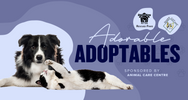Halloween is always a fun time of year to celebrate all the spooky things. Whether it's fictional monsters or real frights like spiders, there's no shortage of things that go bump in the night.
Unfortunately for some animals, the Nature Conservancy of Canada (NCC) says some species get an unfair bad reputation from being seen as scary animals. This includes animals like bats, wolves, ravens, owls, spiders, and more. While the Nature Conservancy isn't calling for people to stop decorating and dressing up as these animals, they explained that negative stereotypes can actually harm animals that may need protection.
“It’s really sad that many of these species are misunderstood. Instead of fearing these animals, we should actually be scared for them because many of the species we are talking about are at-risk or endangered,” said Megan Quinn, coordinator for conservation biology with the NCC. “Several bat populations, for example, have seen huge declines. And the problem is, if people are afraid of something, they may not really understand why we need to protect it or, even worse, be openly hostile to these creatures that are just trying to survive.”
The non-profit organization hopes that with greater education, negative stereotypes around these animals could fade away so that they can gain public support for protection and conservation efforts. Quinn explained some fears we have are purely fictional.
“We have vampires to thank for our fear of bats. One of the big myths is that bats will suck your blood. None of the 18 species of bats that we have in Canada drink blood. They are all insectivores, meaning they eat insects, including some insects many people don’t want buzzing around like mosquitoes. So if you don’t like mosquitoes, you should really like bats."
 Little Brown Bats, one species of bats currently at risk
Little Brown Bats, one species of bats currently at riskPhoto Courtesy: Frédérick Leliévre
Some species of owl, such as barn owl, burrowing owl and short-eared owl, are also struggling. Like other nocturnal creatures, NCC conservation science manager Sam Knight says owls sometimes get an unfair reputation.
“They look spooky because they have big round eyes. Their call is very haunting, and they are silent when they fly, which is kind of eerie and adds that overall mystique. However, owls do a lot of very good things for our ecosystems. They are fantastic at keeping rodent populations in check and are a key part of the forest ecosystem. Unfortunately, we are seeing many of our owl species decline,” says Knight.
Other animals currently at risk include the Eastern Wolf. Currently, there are more than 800 species at risk in Canada, which includes plants and animals. the NCC currently protects and stewards more than 240 of these species.
Send your news tips, story ideas, pictures, and videos to news@strathmorenow.com







